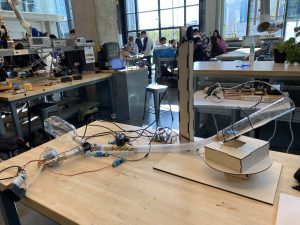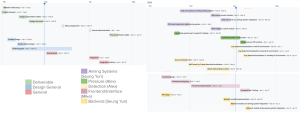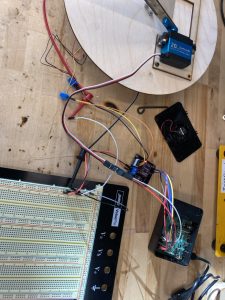As we approach the final demo next week, the only risk that remains is the parts failing. To mitigate this, we’ve made some spare parts that can be replaced on the fly. For example, we have multitude of motors for the pressure system, and we have replacement parts for all parts of the pressure system’s tubing. The aiming system also has a backup motor and motor drivers in case it fails.
We don’t have any major design changes this week.
We don’t have any schedule changes this week.
We’ve performed lots of unit tests and overall system tests recently. We’ve did individual unit tests for vertical and radial aiming system. The pressure system had reliability testing by shooting in the same setting multiple times. The vision system had accuracy testing by detecting the ball’s landing spot and cup’s true location. We performed user testing on our frontend. For the final integration testing, we’ve ensured that having the same setting yielded consistent landing location.
We were able to use the values from the testing for calibration. For example, the voltage reading from the pressure sensor was measured during testing to see what is the appropriate range for the game – we’ve found that 2V – 3V is the sweet spot, and have decided to use this range that users can actually set.
We haven’t made any significant design changes while testing, as the results passed our expected criteria.







